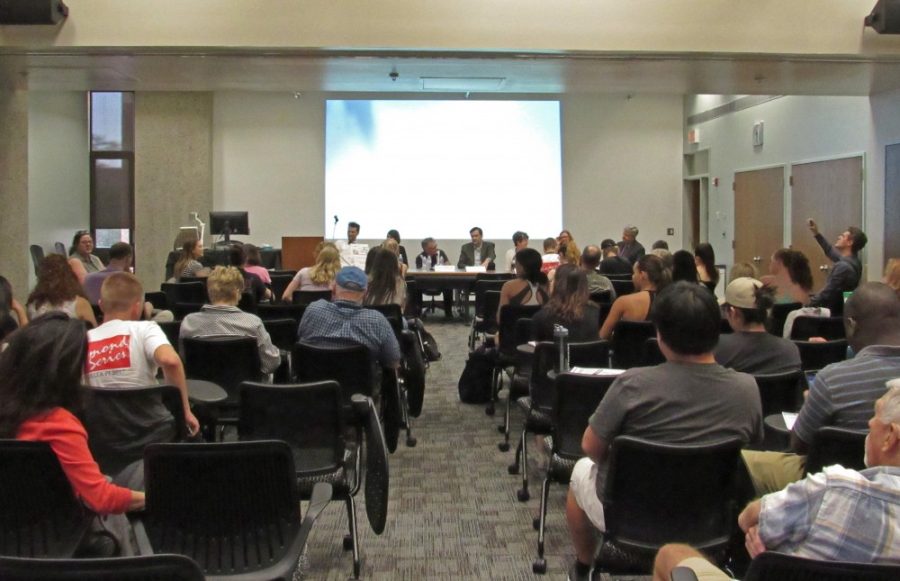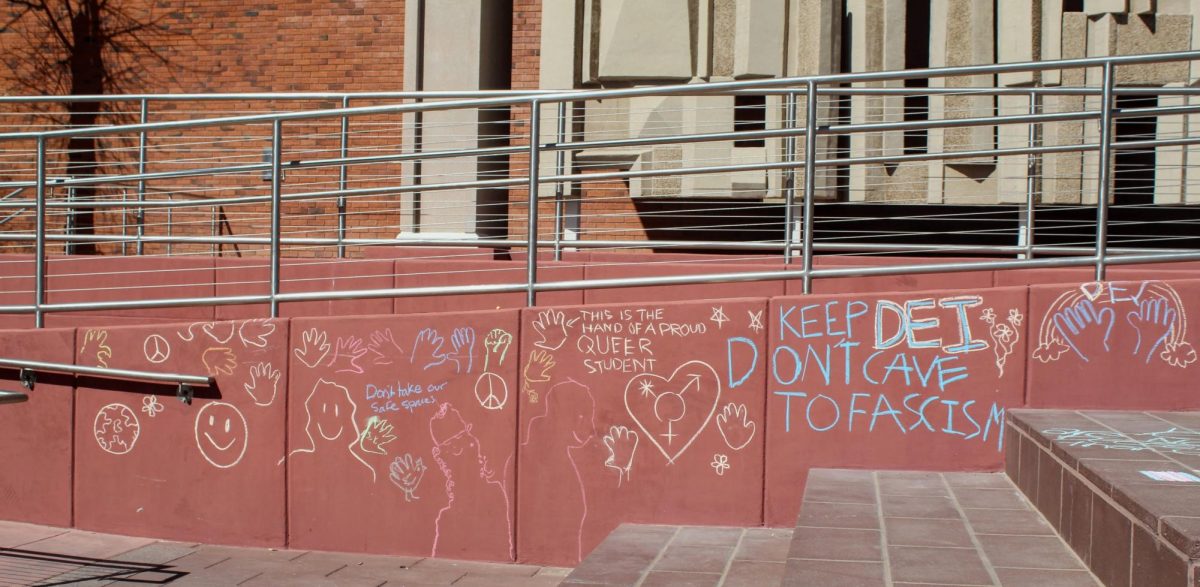An engaged panel gathered Wednesday night to discuss fake news and the future of trustworthy journalism at “The Future of Freedom of the Press in the Era of Fake News.”
Journalists and experts within the industry shared their knowledge and experience with a crowd of students and community members at the UA Main Library.
After a brief introduction by Daily Wildcat editors Andrew Paxton and Jamie Verwys of the UA Society of Professional Journalists, the sponsor of the event, the night got off to a comedic start with Arizona Daily Star cartoonist David Fitzsimmons.
Fitzsimmons illustrated the history of fake news through drawings depicting everything from pterodactyls to his mother.
“When I was young, our presidents always told the truth,” Fitzsimmons said joking, pointing out that fake news is not a new issue facing journalism.
However, the thing that is new and constantly evolving is the media through which we present news.
“When something appears online,” Fitzsimmons said, “it is amazing how people will believe it.”
RELATED: Fake news is changing the news media landscape
Taking a more serious stance on the issue, the School of Journalism Director, David Cuillier, presented the audience with his perspective on the current state of the news industry:
“We are talking about an information war,” Cuillier said. “It is all about power, and information is power.”
In regards to consuming news media, UA Librarian Mary Feeney used her expertise in research skills to present some tips on finding reliable information.
“Google the writers and see, do they even exist?” Feeney said. “Always check your sources.”
Some other tips included maintaining a healthy skepticism, checking your own bias and getting news from diverse sources. Both Feeney and Cuillier advocated that stopping fake news is as much a responsibility of the consumer as it is of the journalist.
“As citizens, we need to do more; we need to demand better information,” Cuillier said.

One issue that journalists often come up against is the idea that people will believe articles that agree with their personal opinions and discount anything that goes against those views. With the influx of use of the term “fake news,” readers are immediately accusing stories that they don’t agree with as being lies.
The Arizona Republic, a traditionally conservative newspaper, struggled with this issue in the last election as they decided to endorse presidential candidate Hillary Clinton.
“We had a lot of cancelations,” said Linda Valdez, an editorial writer for the Republic. “And that is when the death threats started coming in.”
While journalists often deal with being disliked—and even threatened—due to the subjects of their stories, the term “fake news” is appearing in complaints more and more.
“It has taken off in emails and letters to the editor,” Valdez said. “They almost always start with ‘fake news.’”
RELATED: New York Times vice president speaks on issues facing journalists at media law event
Dylan Smith, editor and publisher of the Tucson Sentinel, a local non-profit online news publication, discussed the reasons fake news exists.
Flashy headlines and attention-grabbing stories draw clicks and readers to a page, generating revenue—something that news organizations badly need in modern society. By being a non-profit, Smith said he is able to work under the principle that educating readers is more beneficial than just “getting eyeballs.”
“We don’t try to run with the most feverish headlines,” Smith said. “We try to just give people the facts.”
When asked a question from the audience regarding what journalists should do in the face of fake news, Smith offered ethical advice for the journalism community:
“Try to be as accurate as we can, and fair,” he said. “That is all we can do.”
With resounding agreement from his fellow panelists and a room full of journalists, Fitzsimmons offered words of encouragement for students embarking on careers in the turbulent field of journalism:
“As a journalist, all you have is your integrity,” Fitzsimmons said. “Remember that.”
Follow Tirion Morris on Twitter.









